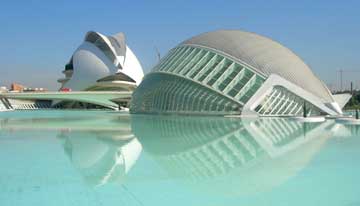Get Fast-Tracked

eturning from a trade mission and editorial research trip to Spain a few days ago, I couldn’t help but feel humbled by the new infrastructure I saw and toured there, because I would be hard- pressed to find much in the U.S. that one could consider comparable. I will share lots more on the projects and regions that were part of the trip in the Spain Spotlight and Editorial Profile on Spain’s Aragon region that will run in the September issue.
But I’d like to make some observations here, because they complement the point I made in the May issue’s Editor’s View about the U.S. as a global competitor for investment.
First, it’s not just Spain, though that visit’s experiences are freshest in my mind. But from southern Europe to the Pacific Rim to the Middle East’s Emirates, locations are building signature developments – industrial and otherwise – and transport and logistics networks that leave similar efforts in the U.S. in the dust. The first new major airport in the U.S., Denver International, resulted in an interesting, mountain- range- looking structure in the plains east of Denver.
The newest Asian airports – Hong Kong International at Chep Lap Kok and Bangkok’s Suvarnabhumi, which opened in 1998 and 2006 respectively – were the first steps in creating new airport cities, “Sky City” in Hong Kong’s case. These developments, complete with multimodal logistics capabilities, high- speed rail access to the city center and land zoned for industrial development,

will surely jump start economic activity on a regional and national level.
Speaking of high- speed trains, the new AVE train from Zaragoza in Aragon to Madrid and Barcelona (approximately 90 minutes each) gives companies seeking a Spanish site a new location option, especially those looking to distance themselves from – but wanting quick access to – the Madrid and Barcelona metropolitan areas. The U.S. has Amtrak’s Acela high- speed train in the Boston- New York- Washington corridor and, well, it has that. Efforts to build high- speed rail links between other U.S. metro areas, such as Atlanta and Charlotte, N.C., for instance, never seem to get off the ground, as it were.
On the industrial development front, I would very much like to learn about any new,
13 million- square- meter logistics parks being built adjacent to an airport and rail complex in a mid- size or large U.S. city. Or a similarly sized Technology Recycling Park for industry, which gives manufacturers a way to deal with waste materials without bringing them elsewhere. Such infrastructure is of great interest to industrial investors – and both these projects happen to be within a few kilometers of Zaragoza, Spain (where any and all spare cranes are being used to build the 2008 World Expo development at a site on the Ebro River near downtown Zaragoza).
The U.S. is not without smart, new developments for industry. But their designers could learn something from their non- U.S. counterparts in how to make them more pertinent to 21st Century industrial development, if not more memorable.
Till next time,

Mark Arend
Site Selection Online – The magazine of Corporate Real Estate Strategy and Area Economic Development.
©2007 Conway Data, Inc. All rights reserved. SiteNet data is from many sources and not warranted to be accurate or current.

